Download Romeo Pro LE - Enabling Technologies
Transcript
Romeo Pro LE (Narrow and Wide versions) Braille Embosser User's Manual RoHS Compliant © Enabling Technologies 1601 Northeast Braille Place Jensen Beach, Florida 34957 USA Toll-Free Phone USA Only (800) 777 3687 Toll-Free Fax USA Only (800) 950 3687 Phone (772) 225 3687 Fax (772) 225 3299 E-Mail: [email protected] Web: http://www.brailler.com Copyright 1986-2009 by Enabling Technologies Company All Rights Reserved. Revised January, 2009 Romeo Pro LE 1 No part of this publication may be reproduced, stored in a retrieval system, or transmitted in any form, without the express written permission of Enabling Technologies Company. Every precaution has been taken in the preparation of this manual to ensure the completeness and accuracy of the information it contains. Even so, Enabling Technologies Company assumes no responsibility for such errors or omissions that may occur. Neither do we assume any liability for damages resulting from the use of information contained herein. Brand names, company names, or product names mentioned in this document may be trademarks, registered trademarks, or service marks of their respective companies. The ENERGY STAR® logo is a registered service mark of the United States Environmental Protection Agency. As an ENERGY STAR® partner, Enabling Technologies has determined that these products meet ENERGY STAR® guidelines for energy efficiency. All environmentally friendly, Enabling Technologies embossers bearing the proprietary RoHS Compliant © logo are certified to comply with all requirements of the Restriction of Hazardous Substances - EU Directive 2002/95/EC: restriction on the use of certain hazardous substances in electrical or electronic equipment sold or used in the European Union after July 1, 2006. These substances are lead, mercury, cadmium, hexavalent chromium, polybrominated biphenyls, and polybrominated diphenyl ethers. The Restriction of Hazardous Substances Directive (RoHS) became European Law in February 2003. Together with the Waste Electrical and Electronic Equipment Directive (WEEE), which is setting collection, recycling and recovery targets for all types of electrical goods, it is part of a legislative initiative to solve the problem of huge amounts of toxic e-waste. DISCLAIMER: Enabling Technologies does not guarantee the Braille accuracy or Braille content produced using the Romeo Pro LE. The Braille accuracy and Braille content is the sole responsibility of the end user. Romeo Pro LE 2 INTRODUCTION ..................................................................................................................................................................4 A Brief Tutorial About Braille ............................................................................................6 Glossary .............................................................................................................................7 SETTING UP YOUR EMBOSSER......................................................................................................................................8 Unpacking ..........................................................................................................................8 Installing the Visual On/Off Line LED Indicator.................................................................8 Installing the Removable In-Feed Guide ............................................................................9 Installing the Label Stock ...................................................................................................9 The Keypad......................................................................................................................10 Changing (and Restoring) Menu Settings .........................................................................11 Setting the Label Mode....................................................................................................13 Pause/Resume Mode .......................................................................................................14 Setting Page/Label Length................................................................................................15 Setting Top-of-Form Offset.............................................................................................16 Setting Top-of-Form........................................................................................................17 Connecting To Your Computer ......................................................................................18 GRAPHICS .........................................................................................................................................................................22 MULTI-COPY .....................................................................................................................................................................22 ET SPEAKS.........................................................................................................................................................................24 ET Speaks and Your Embosser........................................................................................24 TECHNICAL SPECIFICATIONS ....................................................................................................................................26 Special Features ...............................................................................................................27 FCC Compliance .............................................................................................................28 QUICK REFERENCE GUIDE............................................................................................................................................29 Keys .................................................................................................................................29 Tones ...............................................................................................................................29 Top-of-Form Reset..........................................................................................................29 Menus ..............................................................................................................................30 Multi-Copy.......................................................................................................................32 ET Speaks ........................................................................................................................32 Service Menu ...................................................................................................................32 WARRANTY, SUPPORT & SERVICE ...........................................................................................................................34 FREQUENTLY ASKED QUESTIONS ..............................................................................................................................36 Romeo Pro LE 3 INTRODUCTION The Romeo PRO LE is available in two versions, narrow and wide, and both were designed with the special requirements of label production in mind. Based on our popular Romeo PRO 50, the Romeo PRO LE narrow version has been modified to produce a narrower 24 character Braille line, and the Romeo PRO LE wide version has the capability of producing a 40 character Braille line. Both the narrow and wide versions can emboss on adjustable label sizes from 0.5 inches to 4.0 inches in 0.25 inch increments and include several remote control features that allow easy integration into automated production lines. The two models of Romeo PRO LE offer the highest quality Braille in the industry coupled with legendary Romeo quality and reliability, making this product the ideal choice for your most challenging label production requirements. A number of other handy features have also been included to assist with the insertion of the Romeo PRO LE into automated label production systems. These additional features include: Removable In-Feed Guide to support label stock as it feeds into the embosser. Full Certified compatibility with the Marburg Medium Braille specification. Visual On/Off Line LED Status Indicator as well as coordinated control signals available on the RS-232 serial channel to synchronize the embosser with specialized label production software. Pause & Resume Control inputs to synchronize the embossing of labels with an ink printer. Adjustable Locking Impact Control to prevent operators from accidentally changing embosser impact settings. Compatibility with the Duxbury DBT Label Edition drivers available in DBT 10.6 SR4 or higher. Romeo PRO LE narrow version can operate as a conventional embosser with a limited 24 cell line or when set to Label Mode can emboss labels up to six inches in width and in vertical increments ranging from 0.5 inches to 4.0 inches in 0.25 inch increments. Romeo PRO LE wide version can operate as a conventional embosser with a 40 cell line or when set to Label Mode can emboss labels up to eleven inches in width and in vertical increments ranging from 0.5 inches to 4.0 inches in 0.25 inch increments. Manual Top-of-Form adjustment knob for finite top of form adjustment. Romeo Pro LE 4 Even if you're experienced with Braille and computers, our embossers have lots of handy features that take only a few minutes to learn but make your work much easier and faster. That's why we hope to persuade everyone to read the short section called "Setting Up Your Embosser." If you're new to Braille desktop publishing, "A Brief Tutorial About Braille" describes the basic process of creating Braille in less than two pages. To help you get the most out of your embosser both now and in the future, we've enclosed a CD-ROM that includes: MANUAL.TXT A text file version of the Romeo Pro LE User's Manual suitable for use with most screen readers. MANUAL.PDF An accessible Adobe Acrobat version of the Romeo Pro LE User's Manual. USERMAN.BRF A formatted grade 2 Braille file of the Romeo Pro LE User's Manual 40 characters by 25 lines. Installing the ET Emboss Driver in Windows XP.PDF This Adobe Acrobat file contains the detailed instructions for installing the ET Emboss driver in Windows XP. \ETEmboss\ This subdirectory contains the drivers needed by the Microsoft Windows XP operating system to properly install your embosser. And (sometimes) README.TXT Where we add things at the last minute that were too late for the manual! Romeo Pro LE 5 A Brief Tutorial About Braille Many people think that a Braille embosser automatically prints "in Braille" from your computer files by substituting Braille letters for print ones. Although publishing in Braille gets easier all the time, it's not quite that simple yet. The Braille alphabet evolved from a French military code designed for night reading and is based on a six-dot "cell." One "cell" stands for one letter, as you might expect, but not all the time. More often, words have been shortened and punctuated according to rules unique to Braille. The rule systems are called "grades". Grade 1 Braille uses official Braille punctuation and capitalization but spells out every text letter of every word. Grade 2 Braille uses official Braille punctuation, capitalization, and nearly 200 contractions to save space. Most documents for adult readers, as well as most signs in public buildings, are in grade 2 Braille. The grade 2 contractions are understood by Braille readers everywhere and are abbreviations of common words and letter combinations. For example, "you" in grade 2 is the letter "Y". Unless you're a Braille reader or a certified Braille transcriber, there is no way you could possibly know these rules. That's why you need a software package called a "translator." Translation software reads your computer files and literally "translates" them into correctly contracted, punctuated, and formatted Braille pages, ready to "print" on your Braille embosser. Newer translators even contain their own word processors so you can create, edit, spell check, print, translate, and emboss your documents inside the translator, just as you would in Microsoft Word or WordPerfect. Others produce Braille by reading common types of word processing files, typically in ASCII text format, and creating new ready-to-emboss Braille files. Translators are very easy to use and typically create the finished Braille computer files (even long ones) in seconds. Once you're ready to emboss the Braille you've created, you can roughly estimate the finished size of most Braille projects if you keep in mind that even with grade 2 contractions AND the larger dimensions of standard Braille paper, 1 print page usually equals 2 to 3 Braille pages. Romeo Pro LE 6 Glossary Buffer: Configuration: Default: Emboss Head: Interface: Interpoint: Menu: Multi-Copy: NOV-RAM: On-Line: Off-Line: Parallel Port: Parameters: ROM: Sequence: Serial Port: Top-of-Form Offset: Tractor: Tractor Well: USB Port: Memory reserved to store data entered into the embosser. One page uses about 1K or 1000 characters of the buffer. A collection of settings for a computer connection. What you get if you don't change anything. Mechanical element that makes the Braille dots. Connection. Braille characters on both the front and back sides of a single sheet of paper. A stored collection of settings in the embosser's memory. Built-in function copies stored text up to 99 times. Nonvolatile memory. Stores menu settings while the power is off. Ready to receive data from a computer USB, serial or parallel port. Ready to receive commands. Not ready to receive data from computer. Connects the embosser to a computer with a Centronics type interface. Settings. Read only memory. Contains the embosser "firmware" (permanent programming) of its features and functions. A series of key strokes, usually followed by the Enter Key. Connects the embosser to a computer with a serial RS-232D Interface. Top margin of Braille paper during embossing. Moves the paper through the machine while printing. Recess into which the tractors are installed. Universal Serial Bus - Connects the embosser to a computer with this high speed connection. Romeo Pro LE 7 SETTING UP YOUR EMBOSSER Unpacking First, check the embosser and accessories carefully for damage. If any damage is apparent, notify the shipper immediately. Also, check the contents against the packing list and if you find a discrepancy, let us know as soon as possible. IMPORTANT! Remove any shipping locks that may be in place and save them, along with the carton and other packing material. You will need them should you ever have to return the embosser for service. Although the embosser is in a very sturdy, shock-resistant case, shipping any electronic equipment without proper packing is not a good idea! Place the embosser on a sturdy desk or table with the handle of the embosser facing you and remove the lid. Remove the shipping lock according to the directions found in the box. Plug the power cord first into the embosser's power interlock, and then into a grounded outlet. (The embosser's power requirements are listed under "Electrical" in the "Technical Specifications" section later in this manual.) Installing the Visual On/Off Line LED Indicator The Romeo PRO LE comes with a removable visual on/off line LED indicator that shows at a glance the state of the embosser’s line status. This feature is primarily used when the Romeo PRO LE is installed as part of an automated print and Braille label production system to give the operator a quick way to check system status. Not all label applications will require this handy device and it is not required to be installed for the Romeo PRO LE to emboss Braille labels. Installation of the visual on/off line LED indicator is very simple. Simply plug the visual on/off line LED indicator into the nine pin serial port connector located in the right rear corner of the Romeo PRO LE. The visual on/off line LED indicator is powered via the serial port and requires no other connection. Please note that if you plan to connect the Romeo PRO LE to your computer system via the RS-232 serial port, the cable leading to the computer will plug into the male connector located on the top of the visual on/off line LED indicator. Romeo Pro LE 8 Installing the Removable In-Feed Guide The Romeo PRO LE comes with a removable in-feed guide to allow for the smooth movement of the label stock into the embosser’s tractor drive system. Locate the two thumb screw knobs located on the front, top surface of the Romeo PRO LE. Remove the two thumb screw knobs by turning them counterclockwise. Position the removable in-feed guide over the two mounting holes along the top surface of the embosser with the curved edge facing forward and the 90 degree bend facing downward towards the floor. Attach the removable in-feed guide by reinstalling the two thumb screw knobs and tightening them securely by turning them in a clockwise direction. Installing the Label Stock Before beginning, it is important to note that the Romeo PRO LE has been designed to operate with only high quality label materials. There is a wide range of label materials available on the market with varying degrees of quality. Not all label stock is suitable for embossing Braille. It is imperative that any label stock used in the Romeo PRO LE be of sufficient quality to prevent either the backing material or the label itself from being pierced or perforated during the embossing process. Light weight or poor quality labels are not recommended for use in the Romeo PRO LE. IMPORTANT! The Romeo PRO LE warranty does not cover damage due to adhesive build-up or the accumulation of any foreign materials in the machine’s embossing mechanism. For specific questions regarding the suitability of labeling materials, contact your Enabling Technologies representative. Remove the label stock from the box by turning the box upside down and stack the label stock neatly on the floor in front of the table. Open the embosser's paper tractors by lifting on the inside edge of each tractor door. They will stay open until closed by hand. Insert the leading edge of the label stock into the embosser and make sure that the paper edge can travel easily under the metal bar across the top of the embosser. Position the tractors so that the tractor pins line up with the holes on the edges of the label stock (making sure the label stock is straight). To move the tractors from side to side, push the small release handles, located near the outside edge of each tractor, toward you. (They may be a little stiff at first.) Although both tractors are able to move, generally it is the right tractor Romeo Pro LE 9 that needs to be moved more often because that is how you adjust for differences in label stock width. Close the tractors to grip the label stock and tighten the release handles back down to lock the tractors themselves in position. Check to be sure there is enough room behind the embosser to collect the finished labels. Turn the power switch on. The embosser will execute a self test and plays an excerpt from Tchaikovsky's "Romeo & Juliet". The Romeo PRO LE will come up talking automatically and tell you that the embosser is ready to run. The Keypad The keypad is a small 16-key keyboard in the right front corner of the embosser surface. The keypad is how you tell the embosser what to do. The keys are spaced 4 columns down by 4 rows across. The top three rows are laid out in calculator format with 7, 8 and 9 running from left to right on the top row, 4, 5 and 6 just below them, and 1, 2 and 3 next to the bottom. The key at the left of the very bottom row is 0. To the right of zero is the decimal point, and to the right of that, a key labeled E. The keys in the far right column are, from top to bottom, the OL, LF, FF and V key. OL (On-Line/Off-Line) The embosser must be on-line to receive and print data from a computer, and it (usually) must be off-line to receive commands from you. Press OL to take the embosser from on-line (ready to receive and print data) to off-line (ready to respond to your commands). Press it again to return on-line. Note the audible difference in the on-line and off-line tones. If you press OL while embossing, the embosser will pause. Any data left in the buffer remains, and embossing will resume as soon as you press OL again. LF (Line-Feed) On-line, LF makes ET Speaks (if present) repeat its last phrase. Off-line, LF advances the paper one line each time this key is pressed. Romeo Pro LE 10 FF (Form-Feed) On-line, FF makes ET Speaks (if present) stop speaking in mid-phrase. Off-line, FF advances the page to the top of the next page and prints the last partial page in the buffer, if necessary. V (View) Off-line, V works with ET Speaks (if installed) to verify individual menu settings. Otherwise, pressing V advances the page several lines, allowing you to read the line just embossed. Pressing V once more returns the paper to its original position. This feature is handy when you wish to verify the contents of a document that is currently being embossed. E (Enter) E is similar to the "enter" key on your computer keyboard and is used to finish and transmit commands. Changing (and Restoring) Menu Settings Because Braille embossers need to work with many different kinds of software and computer operating systems, the embosser has a built-in feature that remembers sixteen different groups of settings, exactly as if you were going to use sixteen different computers with one embosser. Each group of settings is called a "menu." All the menus stay set and ready to use even when the power is off. Eight of the menus are preset at the factory with settings many of our customers have requested. The other eight are yours to create as you need them. You can change, create and save settings in all the menus, even the ones preset at the factory. When you turn on your embosser for the first time, Menu 3 is the default (which means it has control until you change it). Menu 3 is for a USB connection to an IBM-compatible computer. Use your new embosser to print out a Braille graphic of the keypad and a Braille list of all sixteen menus and their settings, which are stored permanently in the Service Menu. To print out the list (assuming you have put paper in the embosser, turned on the power, and set top-of-form), enter the following on the embosser's keypad: OL Takes the embosser off-line 0.0E Enter the Service Menu (Menu Zero) Romeo Pro LE 11 10E Emboss a graphic representation of the keypad and all 16 user menu default settings stored permanently in the embosser's memory You can stop the list during printing with the E key. Each of the sixteen menus has the same features, many of which will be familiar to most computer users (like right and left margins, word wrap, and page length), while others are unique to Braille environments. When the embosser is OFF-LINE and in one of the menus, you can make ET Speaks (if installed) tell you what the menu parameter is without changing anything. V.NE Reads menu parameters while in a menu For example: Should you change the right margin? You think you set it for 24 characters wide yesterday but you're not sure. Enter on the embosser's keypad: OL 0.3E V.14E Takes the embosser off-line Enter Menu 3 ET Speaks will read the current right margin setting, because 14 is the parameter assigned to the right margin Now you know if you have to change the margin setting--or not. 1.1E Exit the menu How to Change Menu Settings Because each menu contains over thirty different settings, sooner or later you'll want to make some changes when you need to use different paper, Braille formats or port connections. For example, let's say you're using Menu 3 because you have an IBM PC-compatible. You want to adjust the right margin for narrower Braille paper. Enter the following on the embosser's keypad: OL 0.3E 14.24E 1.1E Takes the embosser off-line Enter Menu 3 Set the right margin at 24 Braille characters Return on-line and use this menu as the current configuration A complete list of the thirty-plus individual menu items is also in the Quick Reference Guide in the back of this manual. Romeo Pro LE 12 Setting the Label Mode The label mode is controlled by a special entry in each of the embosser’s 16 menus. There are two ways to activate the label mode. The label mode is controlled using menu entry 50. Assuming the embosser is using default menu 3, the label mode is activated using the following sequences: OL 0.3E 50.1E 1.0E 1.1E Takes the embosser off-line Enter Menu 3 Activate the Label Mode Make this the power-on default Exit menu and reset embosser To disable the label mode and return the embosser to normal operation, enter the following sequences: OL 0.3E 50.0E 1.1E Takes the embosser off-line Enter Menu 3 Deactivate the Label Mode Exit menu and reset embosser If you are using any other menu, simply substitute this in sequence two. The label mode may also be selected from the software application driving the embosser by sending escape sequences to the embosser. The escape sequence that changes the label mode is ESC jN where N equals the following: @ = Turn off Label Mode A = Turn on Label Mode Please note that all the letters used in this escape sequence are case sensitive and in this example are both upper and lower case. These escape sequences all utilize standard ASCII characters. When the label mode is activated, the following changes are made to the embosser’s basic operating condition. The label mode offers the ability to remotely pause and resume the embosser while printing normally. When activated, this special embossing control will leave the embosser on-line with the PC so normal data transfers can occur. The label mode also alters the form length settings of the embosser to select label lengths from 0.500 inches to 4.000 inches in 0.250 inch increments. Romeo Pro LE 13 Additionally, the top-of-form offset resolution is altered from 0.100 inches per table entry to 0.010 inch increments, with a special escape sequence added to remotely set the top-of-form without using the keypad. Pause/Resume Mode The Pause/Resume mode utilizes the embosser’s 9 pin RS-232 serial port. There are two methods that can be employed to pause and resume the embossing action. The first method is to connect the embosser’s RS-232 port, output pin 4, DTR, to input pin 6, DSR. By shorting these two pins together using a switch closure, the embosser will pause embossing until the switch is opened. While paused, the embosser will remain on-line and continue to communicate with the host PC normally. You may connect to the embosser using a DB-9 pin, female connector. The second method for controlling the Pause/Resume mode is completely via the host PC. If the host PC is connected to the embosser’s serial RS-232 port using standard cables, the host program can send data to the embosser and also toggle the DSR pin 6 via software to remotely control the embossing operation. If this method is employed, the host should set the embosser to use RTS/CTS hardware busy or XON/XOFF software busy to properly handle data flow control from the PC and prevent an overrun condition from occurring in the embosser. Restoring Factory Settings If you change too many menu parameters to keep track of, or if you're not the only person to use the embosser, you might want to reset the embosser back to the original factory settings. Although you will lose all changes you've made to the menus, you'll also be starting fresh. OL 0.0E 95E 1E Takes the embosser off-line Enter the Service Menu Restore the factory default settings Reset the embosser Romeo Pro LE 14 Setting Page/Label Length There are two methods provided for setting the page/label length in the embosser. You may set the page length, or in the case of labels the label-tolabel distance using the page length parameter in each of the embosser’s 16 menus. When the label mode is not active, the page length can be set in one inch increments from 3 to 14 inches. Parameter 18 sets the page length and valid entries range from 18.3 to 18.14. When the label mode is activated, this parameter is altered to select page/label lengths of 0.500 inches to 4.000 inches in 0.250 inch increments. Valid entries for parameter 18 when in the label mode are as follows: 18.0 = 0.500 inches 18.1 = 0.750 inches 18.2 = 1.000 inches 18.3 = 1.250 inches 18.4 = 1.500 inches 18.5 = 1.750 inches 18.6 = 2.000 inches 18.7 = 2.250 inches 18.8 = 2.500 inches 18.9 = 2.750 inches 18.10 = 3.000 inches 18.11 = 3.250 inches 18.12 = 3.500 inches 18.13 = 3.750 inches 18.14 = 4.000 inches The page/label length may also be set from the software application driving the embosser by sending escape sequences to the embosser. The escape sequence that changes the page/label length is ESC TN where N equals the following: @ = 0.500 inches A = 0.750 inches B = 1.000 inches C = 1.250 inches D = 1.500 inches E = 1.750 inches F = 2.000 inches G = 2.250 inches H = 2.500 inches I = 2.750 inches J = 3.000 inches Romeo Pro LE 15 K = 3.250 inches L = 3.500 inches M = 3.750 inches N = 4.000 inches Please note that all the letters used in this escape sequence are case sensitive, and in this example, all are upper case. These escape sequences all utilize standard ASCII characters. For example, to set the page/label length to 1.750 inches, the software application would send the following sequence: ESC TE Setting Top-of-Form Offset There are two methods provided for setting the top-of-form offset in the embosser. You may set the top-of-form offset using the top-of-form offset parameter in each of the embosser’s 16 menus. When the label mode is not active, the top-of-form offset can be set in 0.100 inch increments from 0 to 9.9 inches. Parameter 30 sets the page length, and valid entries range from 30.0 to 30.99. When the label mode is activated, this parameter is altered to select top-ofform offset lengths of 0.000 inches to 0.990 inches in 0.010 inch increments. Valid entries for parameter 30 when in the label mode are 30.0 to 30.99. The top-of-form offset may also be set from the software application driving the embosser by sending escape sequences to the embosser. When setting the topof-form offset value via escape sequences, the maximum offset is limited to 62 or 0.620 inches. If offsets higher than this value are needed, they must be set using the embosser’s keypad. The escape sequence that changes the top-ofform offset is ESC tN where N equals the top-of-form offset in 0.010 inch increments. Valid entries for N are the following: @=0 A=1 G=7 H=8 N = 14 O = 15 U = 21 V = 22 \ = 28 ] = 29 c = 35 d = 36 j = 42 k = 43 q = 49 r = 50 x = 56 y = 57 B=2 I=9 P = 16 W = 23 ^ = 30 e = 37 l = 44 s = 51 z = 58 C=3 J = 10 Q = 17 X = 24 _ = 31 f = 38 m = 45 t = 52 { = 59 D=4 K = 11 R = 18 Y = 25 ` = 32 g = 39 n = 46 u = 53 | = 60 E=5 L = 12 S = 19 Z = 26 a = 33 h = 40 o = 47 v = 54 } = 61 F=6 M = 13 T = 20 [ = 27 b = 34 I = 41 p = 48 w = 55 ~ = 62 Romeo Pro LE 16 Please note that all the letters used in this escape sequence are case sensitive, and in this example are both upper and lower case. These escape sequences all utilize standard ASCII characters. For example, to set the top-of-form offset to 0.250 inches, the software application would send the following sequence: ESC tY Setting Top-of-Form There are two ways to set the top-of-form on the embosser. Using the keypad, you may set the top-of-form by entering the following sequence: OL 2E Takes the embosser off-line Sets the top-of-form and returns the embosser on-line If you wish to set the top-of-form from the software application controlling the embosser, you can send the escape sequence: ESC g Please note that all the letters used in this escape sequence are case sensitive, and in this example are lower case. These escape sequences all utilize standard ASCII characters. If a more finite adjustment of the top-of-form is needed, you may further adjust the top-of-form position manually. Locate the knurled knob on the square drive shaft to the left of the embosser’s left drive tractor. Gently rotate the knob forward or backward to achieve a more finite top-of-form setting. Romeo Pro LE 17 Connecting To Your Computer Through the USB Port (default) If you are connecting via the USB port to your computer, use Menu 3: OL 0.3E 20.4E 1.0E 1.1E Takes the embosser off-line Enter Menu 3 Insert the Ctrl D in the Ignore Table Make this the power-on default Exit menu and reset embosser Connect a USB cable to the embosser's USB port. Connect the flat end of the USB cable to one of the open USB ports on your computer. It does not matter which USB port you select. The embosser is compatible with either USB 1.1 or 2.0 specifications. Once connected, your Windows 2000/XP computer should install the printer as a Virtual Printer Port for USB. Many Windows applications require that a printer driver be installed. Select START, CONTROL PANEL, PRINTERS AND FAXES from the Windows desktop. Select Add Printer from the open window. Click the radio button labeled Have Disk. Insert the CD provided by Enabling Technologies that contains the ET Emboss printer driver. Follow the prompts displayed for your specific version of Windows. Please note that each version of the Microsoft Windows operating system has a slightly different format for installing printers. For more detailed instructions for installing the ET Emboss driver please refer to the “Installing the ET Emboss Driver” instruction file contained on the distribution disc that came with your embosser. If you are using newer translation or transcription software such as DBT from Duxbury Systems to emboss your work, install the translation software package on your computer. Then open the program and select Global, Embosser Setup and select your embosser. Then select Windows Device from the menu and using the scroll down bar select the ET Emboss printer driver you just installed. Menu 3 is already set to work with the embosser's USB port and IBM PCcompatible computers. Assuming you have connected the computer and the embosser as described above, and fully installed your translation software, you can expect to get Braille out immediately. If not, check to make sure the cables are tightly attached, the software is transmitting to the ET Emboss printer driver, and the embosser is on-line. If you are using older DOS programs to translate and print your materials please contact the Customer Support Group at Enabling Technologies for Romeo Pro LE 18 specific instructions. USB ports were not available when the DOS operating system was created. The parallel port is the recommended interface to use if you are using a DOS based program to emboss your materials. Through the Parallel Port Connect a parallel cable from one of the parallel ports on your computer to the parallel port on your embosser. If you have been using a print printer, it is likely to be already connected to your computer's first parallel port, so look for the second parallel port to connect to the embosser. It doesn't matter which parallel port you use, so long as you remember which one it is. Turn on the computer and the embosser. Many Windows applications require that a printer driver be installed. Select START, CONTROL PANEL, PRINTERS AND FAXES from the Windows desktop. Select Add Printer from the open window. Click the radio button labeled Have Disk. Insert the CD provided by Enabling Technologies that contains the ET Emboss printer driver. Follow the prompts displayed for your specific version of Windows. For more detailed instructions for installing the ET Emboss driver please refer to the “Installing the ET Emboss Driver” instruction file contained on the distribution disc that came with your embosser. If you are using newer translation or transcription software such as DBT from Duxbury Systems to emboss your work, install the translation software package on your computer. Then open the program and select Global, Embosser Setup and select your embosser. Then select the port your embosser is connected to on your computer. For parallel connections this is usually lpt1. DBT will automatically send your finished Braille work directly to the embosser. If you are using any other port with Duxbury DBT, select Windows Device from the menu and using the scroll down bar select the ET Emboss printer driver. If you have older transcription or translation software that creates files without sending them to the embosser, you have to copy the final, formatted Braille files to the embosser yourself. Before you can do this in the Windows operating system, you must first install the ET Emboss printer driver in the Printers folder of Windows. Simply select the Add Printer icon found in the Printers folder, select Have Disk and follow the default prompts to install the driver for the parallel port that has the embosser attached. Right click or select the properties for the ET Emboss printer driver and set it as the Default Printer. Menu 1 is already set to work with the embosser's parallel port and IBM PCcompatible computers. Assuming you have connected the computer and the Romeo Pro LE 19 embosser as described above, and fully installed your translation software, you can expect to get Braille out immediately. If not, check to make sure the cables are tightly attached, the software is transmitting to the correct port, and the embosser is on-line. Through the Serial Port If you need to set up a serial connection, first connect a serial cable to the embosser's serial port and to one of the serial ports on your computer. Since computers usually have more than one serial port, make a note of which one the embosser is using. You'll need this information to set up your translation software and adjust your computer's settings, if necessary. If you are connecting via a serial port to your computer, use Menu 2: OL 0.2E 8.1E 1.0E 1.1E Takes the embosser off-line Enter Menu 2 Set the embosser to hardware handshaking Make this the power-on default Exit menu and reset embosser Set your computer for: 9600 baud, no parity, eight data bits, one stop bit and hardware handshaking. If you are connecting via the serial port to a Notetaker, first set your Notetaker for: 9600 baud, no parity, eight data bits, one stop bit and software handshaking. Then change the embosser settings to match: OL 0.2E 8.0E 1.1E Takes the embosser off-line Enter Menu 2 Set the embosser to software handshaking Exit Menu 2 and reset embosser If you already have a clear idea that something else should be changed in the embosser's serial port settings (baud rate, handshaking, etc.), the Quick Reference Guide in the back of this manual has a list of the menu items you can adjust for the serial port. Assuming you have connected the computer and the embosser as described above, and fully installed your translation software, you can expect to get Braille out immediately. Please proceed to the section titled Installing Drivers in Microsoft Windows. Romeo Pro LE 20 Through the Serial Port Using the Label Mode If you need to set up a serial connection, first connect a serial cable to the 9 pin male connector on the visual on/off line LED indicator if installed and to one of the serial ports on your computer. If the visual on/off line LED indicator is not installed, connect the serial cable directly to the embosser's serial port and to one of the serial ports on your computer. Since computers usually have more than one serial port, make a note of which one the embosser is using. You'll need this information to set up your translation software and adjust your computer's settings, if necessary. If you are connecting via a serial port to your computer, use Menu 2: OL 0.2E 3.9600E 50.1E 8.0E 1.0E 1.1E Takes the embosser off-line Enter Menu 2 Set the embosser to 9600 baud Activate the Label Mode Set Software Handshaking (8.3E for RTS/CTS) Make this the power-on default Exit menu and reset embosser Set your computer for: 9600 baud, no parity, eight data bits, one stop bit and software handshaking. Please note that the software application driving the embosser must toggle the DSR pin in the RS-232 port to pause and resume embossing on the printer. Signal level limits for the control of the embosser are standard RS-232 levels. The input limit on the embosser is +14 VDC to –14 VDC maximum. An RS-232 logic level high on pin 6 will pause embossing and a logic level low or an open circuit will resume embossing. Installing Drivers in Microsoft Windows Your CD-ROM contains the ET Emboss printer driver that is compatible with all versions of Microsoft Windows. For installing drivers in Microsoft Windows please see the document titled “Installing the ET Emboss Driver in Windows XP.PDF” contained on this CD-ROM. Advancing Paper If the test of your USB, parallel or serial port above was successful, you now have some Brailled pages to remove from the embosser. Enter the following commands on the embosser's keypad to remove the finished document and prepare for the next: Romeo Pro LE 21 OL FF 2E Takes the embosser off-line Advance a full page. The embosser may finish the last fraction of a page. Tear off the finished pages. Then: Reset top-of-form and send the embosser back on-line, ready for the next job If embossing did not start as you expected, first rule out the obvious: Is everything plugged in, turned on, and directed to the port connected to the embosser? Is the embosser on-line? If these all check out, refer to the F.A.Q. section later in the manual. We've included solutions to the most frequent complications our customers encounter. GRAPHICS Braille graphics are made using special software packages. For more information on producing tactile graphics using your embosser, contact your Enabling Technologies representative. MULTI-COPY Multi-Copy allows you to download up to 18,000 characters of text (about 18 Braille pages) from your computer into a reserved portion of memory, the Multi-Copy buffer. The embosser will copy whatever is in the Multi-Copy buffer from 1 to 99 times without reloading the text from the computer. IMPORTANT! Stay ON-LINE while using Multi-Copy. Run a single test copy of your file first, to be sure margins, paper size, page breaks, etc., are correct. Whatever menu is active when you start Multi-Copy is the one that continues to control the embosser once you start making multiple copies, so make any necessary adjustments to the menu before starting Multi-Copy. When your file is ready for multiple copies, remain on-line, and enter the following on the embosser's keypad: 3.0E Turn on Multi-Copy Go back to your computer and send or copy your file to the embosser. After the file is copied into the embosser's memory, go back to the embosser's keypad and, staying on-line, enter the following: 3.1E Tell the embosser that the file is completely copied Romeo Pro LE 22 If no data was received from the computer, an error tone will sound, warning you that the buffer is still empty. If the file is too large (over 18 pages) for the embosser, the "Buffer Full" tone will sound and the embosser will also begin printing the text that has exceeded the buffer. This allows you to see where in your file the overflow occurred so you will know where to split your document. Tell the embosser how many copies to make. Enter the following on the embosser's keypad: 4.NNE "NN" stands for "any number up through 99" For example, if you want 10 copies, you'd enter 4.10E. If you want 99 copies, you'd enter 4.99E. If your embosser is equipped with ET Speaks, it will count off copies as they emboss so you can monitor how the job is progressing. If you'd rather squelch this feature, you can turn it off within the menu you're using with 25.3E. Other Controls in Multi-Copy 3.2E 3.3E 3.4E Stops printing at the end of the current copy Cancels Multi-Copy and clears the buffer Suspends Multi-Copy at the top of the next sheet of paper If you don't turn off the power or reset the machine, you can send another short document and resume printing where you left off. 3.5E Resumes Multi-Copy after the 3.4E sequence. Check that the paper is at top-of-form prior to entering this command OL stops printing temporarily in Multi-Copy. Printing continues when OL is pressed again. V stops printing and moves the paper out from under the platen, so the Braille which was just printed can be read. Press V again to move the paper back and resume printing. OL, then LF, FF or 0.0E to enter the Service Menu while off-line exits Multi-Copy. The current copy will not be completed but the buffer remains unchanged. You can continue Multi-Copy by going back on-line and entering the 4.NNE sequence. Romeo Pro LE 23 ET SPEAKS ET Speaks and Your Embosser As you've noticed if your embosser is equipped with ET Speaks, your embosser automatically voices all the keypad entries you make and all its own status messages with no intervention necessary from you. However, while using ET Speaks as the voice of your embosser, two keys can help you control the speech when the embosser is ON-LINE. The LF key makes ET Speaks repeat its last phrase The FF key makes ET Speaks "shut up" in mid-phrase Turn Speech Off and Change Voices In The Embosser Menus For embossers equipped with ET Speaks, all sixteen menus have the following additional settings to modify the speech: 25.0E 25.1E 25.2E 25.3E 36.NE Turns the speech OFF Turns the speech ON (the default) Speech ON with spoken escape sequences Speech ON but without counting the copies as they emboss in Multi-Copy Chooses a different voice by substituting a number from 0 to 5 for the "N". 0 is the default (i.e., 36.0E) Example: You use an IBM-compatible computer and have your embosser connected to one of the computer=s USB ports. You want to turn the speech off. To do this, turn on the embosser. Then, on the embosser's keypad, enter: OL 0.3E 25.0E 1.1E Takes the embosser off-line Enter Menu 3. (Menu 3 is the factory menu preset for the IBM PC connected to the USB port. This is probably the menu you have been using) Turn speech off Save these menu changes and exit to go on-line The embosser will now work with "speech off" in Menu 3, unless (or until) you change it. To turn the speech back on, do all the steps above, except instead of 25.0E (which turned the speech off) enter 25.1E to turn speech on. Romeo Pro LE 24 Check parameters without changing them by entering V.NE to have ET Speaks tell you the current setting. In the above example, suppose you want to check to make sure the speech is really on before resetting the embosser. While anywhere in Menu 3, enter V.25E on the keypad to hear the current speech setting. Change Speech Characteristics In The Service Menu All our embossers come with a special Service Menu that contains various testing and maintenance functions, like restoring factory defaults, running dot test patterns, and so forth. Embossers equipped with ET Speaks have additional functions in the Service Menu to enable you to change some of the speech features of the voice now active. The Service Menu's keypad code is OL then 0.0E. 50E 51E 52E 53E 54E 55E 56E 57E 58E 59E 60E 61E 62E 63E 1E Set ET Speaks' volume (0E lowest to 9E highest) Set ET Speaks' speed (0E slowest to 9E fastest) Set ET Speaks' tone (0E bass, 1E mid-range, 2E treble) Set ET Speaks' frequency (0E lowest to 9E highest) Set ET Speaks' pitch (0E lowest to 9E highest) Set ET Speaks' intonation, which is how much expression should be implied by punctuation (0E least to 9E most) Set ET Speaks' articulation, which is the amount of distinctive separation between words (0E least to 9E most) Set ET Speaks' reverb (0E none to 9E most) Set ET Speaks' pause between words (0E shortest to 9E longest) ET Speaks reads the settings above (stop with the E key) ET Speaks reads all sixteen menus (stop with the E key) Press 1 to choose DTMF (“touch-tone” type tones) or any other key for standard 400 Hz “beep” Set DTMF tone volume (0=lowest to 9=highest) Disable speech board (1E enables the speech board, E disables the speech board) Exits the Service Menu Example: You want to maximize the "reverb" to see what it sounds like. Enter these commands on the embosser's keypad: OL Takes the embosser off-line 0.0E Enter the Service Menu 57E Select Reverb as the setting to change 9E Set Reverb to the maximum 1E Exit the Service Menu Back to normal? Repeat all commands above EXCEPT replace 9E with 0E. Romeo Pro LE 25 TECHNICAL SPECIFICATIONS Printing Printing method: Impact. Printing speed: Actual printing speeds may vary based on paper grade setting, page layout and data format. Printing speeds also vary based upon label size and length. The Romeo PRO LE can produce approximately 4,500 1.5 inch labels in one hour (one label across on narrow version and two labels across on wide version). Paper Feed: Sprocket. Line width in Library of Congress spacing: Alpha 24 characters maximum (narrow version); Alpha 40 characters maximum (wide version). Character matrix: 6 dot or 8 dot. Character set: USA default (8 total). Printing direction: Bidirectional. Paper width: Adjustable (1.5 to 13.25 inches). Page length: Selectable (3.0 to 14 inches or 0.5 to 4.0 inches in label mode) Paper weight: 20 lb. to 100 lb. Text buffer: 18,000 characters. Default spacing (Library of Congress): Dot spacing: Alpha 0.090 inch, Dot Height: 0.020 inch. Character spacing: 0.240 inch. Line spacing: 6 dot 0.400 inch, 8 dot 0.490 inch. Other spacing formats selectable: Regular (Library of Congress), California sign, Jumbo, Regular with relaxed line spacing, Petite (Japanese), Petite with relaxed line spacing for interline printing, Marburg Medium and NLS Label. Physical Description (both narrow and wide versions) Width: 21.25 inches (53.9 cm). Depth: 13.25 inches (33.6 cm). Height: 8.25 inches (20.9 cm); 6.00 inches (15.2 cm) without lid. Weight: 32 pounds (14.5 kg). Case Style: Plastic carrying case, with handle. Sound Level: 75 dba average. Sound level may vary with ambient conditions. Environmental (both narrow and wide versions) Temperature: Operating or Storage 35 F to 100 F (2 C to 37.8 C). Humidity: Operating or Storage 10% to 95% (noncondensing). Electrical (both narrow and wide versions) Line voltage: USA 105 to 130 VAC. EURO 210 to 260 VAC. Fuse ratings: (110V) 1.6A slow blow. (220V) 0.8A slow blow. Interface (both narrow and wide versions) Port 1: Centronics compatible parallel. Port 2: Serial EIA-232D (DTE). Port 3: USB. Service (both narrow and wide versions) User maintenance: None required. MTBF (excluding print head): 50,000,000 characters. Print head life: 100,000,000 characters. Accessories (both narrow and wide versions) Standard: Line cord, 3 wire (USA). USB interface cable. In-Feed Guide. Visual On/Off Line LED Status Indicator. Optional: Special interface cables. Special line cords. Romeo Pro LE 26 Special Features 1. 2. 3. 4. 5. 6. 7. 8. 9. 10. 11. 12. 13. 14. 15. 16. 17. 18. 19. 20. Fully configurable print format Fully configurable communications Sixteen independently selectable configuration menus plus a special service menu Configuration stored in nonvolatile RAM Graphics capability Computer Braille or grade 1 translation built in Six or eight dot Braille codes Eight Braille character sets User definable Braille codes 18,000 character text buffer (about 18 pages) Multi-Copy makes up to 99 copies in a single command sequence Paper-out detector Special view feature allows reading the current line Word wrap and hot zone formatting Visual On/Off Line LED Indicator Pause/Resume Mode No user maintenance required All modular construction Dynamic Braille Scaling allows size adjustment in Braille cell size and spacing from Regular Library of Congress (default) to California Sign, Jumbo, Regular with Relaxed Line Spacing, Petite (Japanese), Petite Relaxed (Japanese Interline), Marburg Medium and NLS Label Braille sizes EPA ENERGY STAR® compliant Romeo Pro LE 27 FCC Compliance WARNING: Changes or modifications to this unit not expressly approved by Enabling Technologies Company could void the user's authority to operate the equipment. This equipment has been tested and found to comply with the limits for a Class B digital device, pursuant to Part 15 of the FCC Rules. These limits are designed to provide reasonable protection against harmful interference in a residential installation. This equipment generates, uses and can radiate radio frequency energy and, if not installed and used in accordance with the instructions, may cause harmful interference to radio communications. However, there is no guarantee that interference will not occur in a particular installation. If this equipment does cause harmful interference to radio or television reception, which can be determined by turning the equipment off and on, the user is encouraged to try to correct the interference by one or more of the following measures: 1. 2. 3. 4. Reorient or relocate the receiving antenna. Increase the separation between the equipment and receiver. Connect the equipment into an outlet on a circuit different from that to which the receiver is connected. Consult the dealer or an experienced radio/TV technician for help. Romeo Pro LE 28 QUICK REFERENCE GUIDE Keys OL LF FF V 0-9 Decimal E On-Line/Off-Line (toggle) Line-Feed Form-Feed View (toggle) Numeric entry Numeric entry Enter Tones Various sounds indicate the status of the embosser. Try out the tones (it won't hurt anything) by typing the sequences below on the embosser's keypad while off-line. 1.0E 1.1E 1.2E 1.3E 1.4E 1.5E 1.6E 1.7E 1.8E 1.9E 1.10E Romeo & Juliet tune--Power on self test OK Chopin Funeral Dirge--Power on self test failed 2 short beeps--OK Buzz--Invalid sequence 4 long beeps--Overrun error (serial data) Low to high--On-line High to low--Off-line 1 short beep--Console bell Series of low to high--Paper out Series of low beeps--Exit tone Beethoven's 5th--Multi-Copy buffer full Top-of-Form Reset Do this after you change menu settings or add paper. OL 2E Takes the embosser off-line Set top-of-form. Embosser resets automatically Romeo Pro LE 29 Menus Enter a Menu OL 0.NE Takes the embosser off-line Go to menu N (1 through 16) Menu Settings & What They Do 1.0E 1.1E 2.0E 2.1E 2.2E 3.NE 4.NE 5.NE 6.NE 7.NE 8.NE 9.NE 10.NE 11.NE 12.NE 13.NE 14.NNE 15.NNE 16.NE 17.NNE 18.NNE 19.NE 20.NE 21.NE Make this menu the power-on default Exit and make this menu current Selects serial port Selects parallel port Selects USB port Sets baud rate to N. Available baud rates from 45.5 to 38,400. Example: Change to 9600 by keying 3.9600E Sets the number of data bits to N. Available data bits: 5, 6, 7 and 8 Sets the number of stop bits to N. Available stop bits: 1, 1.5 and 2 Selects parity (0 = none, 1 = odd, 2 = even) Sets communication code (0 = ASCII, 1 = Baudot) Sets handshaking (0=Xon/Xoff, 1=DTR & CTS, 2=DTR & DSR, 3=RTS & CTS, 4=RTS & DSR) Braille mode (0 = 6 dot, 1 = 8 dot) Word wrap (0 = off, 1 = on) Perf skip (0 = off, 1 = on) Paper-out detector (0 = off, 1 = on) Auto LF mode (0=none, 1=xmit, 2=rcv, 3=xmit & rcv) Set right margin to N Set left margin to N Emboss control characters (0 = off, 1 = on) Set lines per page to N Set page length to N (1.0 inch increments, label mode off) Set multi strike count to N. Also, multi strike count can be increased while on-line as well. Stay on-line and enter 9.NE. "N" ranges from 1 (light) to 3 (heavy) strikes. Warning: Multiple strikes dramatically slow (and may eventually damage) embosser when used with light material Enter character N into control character table Remove character N from control character table Romeo Pro LE 30 22.NE 23.NE 24.NE 25.NE 26.NE 27.NE 28.NE 29.NNE 30.NNE 31.NE 32.NNE 33.NE 34.NNE 35.NE 36.NE 50.NE Hot zone (0 = off, 1 = on) Recognize escape sequences (0 = off, 1 = on) 23.1 required for graphics Set bell position to N ET Speaks Option (0 = off, 1 = on, 2 = on plus escape sequences vocalized, 3 = on, but without the copy countdown in Multi-Copy). Default is ON Local echo (0 = off, 1 = on) Braille format (0 = computer, 1 = grade 1) Eighty column mode (0=off, 1=80 column, 2=160 column) Alpha character set (0=none, 1=IBM 437, 2=IBM 850, 3=Spain, 4=France, 5=Italy). (0=USA, 1=Spain, 2=Germany, 3=Swiss, 4=Denmark, 5=Austria, 6=France, 7=Italy) Top-of-form offset (1/10 inch increments, label mode off) Eight bit character handling (0=print 8 bit chrs, 1=ignore eighth bit, 2=print space, 3=discard) Autoprint constant (1 second increments) Reserved Paper grade setting (0=fastest, 12=slowest) Dynamic Braille Scaling: 0=Regular (Library of Congress), 1=California sign, 2=Jumbo size, 3=Regular size, relaxed line spacing, 4=Petite (Japanese), 5=Petite with relaxed line spacing for interline printing, 8=Marburg Medium, 9=NLS Label ET Speaks' (optional) voices (0=default, or 1, 2, 3, 4, or 5) Label Mode (0 = off, 1 = on) Other Menu Functions V.NE V.E N.VE 0.VE Reads, with ET Speaks, parameter N in this menu View function while in menu Prints all parameters in menu N Prints all parameters in current configuration Exit a Menu E 1.1E Exits but remains off-line Exits and makes this menu current Restore Menus to Factory Defaults OL 0.0E 95E 1E Takes the embosser off-line Go to the Service Menu Restore the factory default settings Reset the embosser Romeo Pro LE 31 Multi-Copy Reminder: Stay on-line while using Multi-Copy. 3.0E 3.1E 4.NNE 3.2E 3.3E 3.4E 3.5E Start Multi-Copy Document is fully copied and ready to print Print "NN" (2 to 99) copies of the document Stop printing at end of current copy Cancel Multi-Copy Suspend Multi-Copy at top of next sheet Resume Multi-Copy following 3.4E ET Speaks Two keys control ET Speaks when the embosser is ON-LINE. The LF key makes ET Speaks repeat its last phrase The FF key makes ET Speaks "shut up" in mid-phrase ET Speaks tells you the current setting of menu parameters if you enter V.NE while in the menu. Service Menu This menu contains special functions often used in the testing, aligning, and troubleshooting of the embosser by service personnel, but some are also useful in daily operation. You enter the service menu by going off-line with the OL key, then typing 0.0E. Some of the functions exit automatically when they are completed, and these are labeled "Auto" in the right most column. The others will remain active until you press any key to stop them. Leave the Service Menu by pressing the E key until you hear a series of beeps, which brings you back to the off-line level. SEQUENCE 1E 2E 3E 4E 5E 6E 7E 8E FUNCTION EXIT System reset AUTO Print test pattern (E 5 pattern) ANY KEY Print 6 dot pattern (equal signs) ANY KEY Carriage motor on high power ANY KEY Line-feed motor on high power ANY KEY Top-of-form sensor test (tone) ANY KEY Paper-out sensor test (tone) ANY KEY Home sensor alignment (0=1 step left, .=1 step right) ANY OTHER KEY Romeo Pro LE 32 9E 10E 11E 15E 20E 21E 22E 40E 90E 91E 95E 96E 98E 99E Print test documentation ANY KEY Print keypad and all settings ANY KEY Print graphics mode test ANY KEY Speak (with ET Speaks) firmware version or press 1 to print out firmware revision number in grade 2 AUTO Low Power/ENERGY STAR® Mode Inactive AUTO Low Power/ENERGY STAR® Mode Active AUTO Low Power/ENERGY STAR® Mode Test ANY KEY Home sensor offset (0=negative, .=positive step) E KEY Activate delay before emboss routine (0E-12E) AUTO Activate delay before emboss in Jumbo (0E-30E) AUTO Load defaults into NOV-RAM AUTO Zero the NOV-RAM checksum AUTO Calculate new checksum AUTO Verify the NOV-RAM checksum (Dirge if fail) AUTO Parameters 50 through 63 refer to the ET Speaks option: Set ET Speaks' volume (0E lowest to 9E highest) Set ET Speaks' speed (0E slowest to 9E fastest) Set ET Speaks' tone (0E bass, 1E mid-range, 2E treble) Set ET Speaks' frequency (0E lowest to 9E highest) Set ET Speaks' pitch (0E lowest to 9E highest) Set ET Speaks' intonation, which is how much expression should be implied by punctuation (0E least to 9E most) 56E Set ET Speaks' articulation, which is the amount of distinctive separation between words (0E least to 9E most) 57E Set ET Speaks' reverb (0E none to 9E most) 58E Set ET Speaks' pause between words (0E shortest to 9E longest) 59E ET Speaks reads the settings above (stop with the E key) 60E ET Speaks reads all sixteen menus (stop with the E key) 61E Press 1 to choose DTMF ("touch-tone" type tones) or any other key for standard 400 Hz "beep" 62E Set DTMF tone volume (0=lowest to 9=highest) 63E Disable speech board (1E enables the speech board, E disables the speech board) 50E 51E 52E 53E 54E 55E Romeo Pro LE 33 WARRANTY, SUPPORT & SERVICE Enabling Technologies Company warrants all parts and workmanship of the embosser to be free of defects for a period of one year (365 days) from date of delivery. This warranty is extended only to the original purchaser who must be located within the 50 United States. This warranty is null and void if the embosser is taken outside the borders of the 50 United States. Laws governing limited warranties vary widely outside the 50 United States. For specific limited warranty coverage information related to Enabling Technologies Company products delivered outside the 50 United States, contact the Enabling Technologies Company distributor in your local region or contact Enabling Technologies Company directly. Within the 50 United States, when a defect is found the customer must return the defective product to Enabling Technologies Company immediately upon customer's discovery of the defect in question. Return shipment of the defective product must be pre-paid by the customer. This warranty does not extend to defects resulting from improper use or unauthorized service by purchaser. Also, the warranty is invalid if any of the instructions accompanying the product are not carefully followed. Damage caused by adhesive accumulation or the build-up of any other foreign matter is specifically excluded from coverage under this warranty. This limited warranty is made in lieu of all other warranties, expressed or implied, and is limited to the repair or replacement of the product. No warranty, expressed or implied, is extended concerning the completeness, correctness, or suitability of the Enabling Technologies Company equipment for any particular application. There are no warranties which extend beyond those expressly stated herein. Enabling Technologies Company offers an Extended Warranty Program to customers located within the 50 United States. For further details, contact: Enabling Technologies Company Service Contract Administrator 1601 Northeast Braille Place Jensen Beach, Florida 34957 For support and service within the 50 United States, contact our Customer Support Group toll free at (800) 777 3687 or (772) 225 3687. For customers outside the United States contact your local Enabling Technologies Company distributor. They may be able to resolve your problem quickly on the Romeo Pro LE 34 phone. You may also contact us via e-mail at: [email protected]. If your problem cannot be resolved on the phone, request a Return Authorization (RA) number from the Customer Support Group. You MUST have an RA number before you can return your embosser to us for service. This number is necessary for us to schedule service time for your embosser. After you obtain a Return Authorization number from Customer Support, pack your embosser in the original carton and packing material. If the original carton was discarded, use a container that provides at least three inches of packing material around all sides of the embosser or call us to purchase new packing materials. Include a letter inside the package containing the following information: 1. 2. 3. 4. 5. 6. Your name. Your company name (if applicable). Your shipping address and zip code. Your mail drop code (if applicable). Your RA number. A description of the trouble you are experiencing. Please include as much information as possible about the problem and the conditions under which it occurs. Please have your RA number printed clearly on the outside of the carton so we can begin work on your embosser as quickly as possible. Address the box containing your embosser to the location below for quickest service: Enabling Technologies Company Customer Support 1601 Northeast Braille Place Jensen Beach, Florida 34957 USA Finally, before you ship your embosser, insure the package. We are not responsible for shipping damage, and the carrier is not responsible if the package is not properly packaged and insured. You could be charged for shipping damage if the embosser was not properly packed. Romeo Pro LE 35 FREQUENTLY ASKED QUESTIONS We get some of the same questions repeatedly, so we've included them below. If you have a problem not covered here, call our toll free Customer Support phone number at 1 (800) 777 3687 or 1 (772) 225 3687 for international customers. We will be equally pleased to help you OR to learn from your experience. Q. I'm having trouble entering menu commands. You refer to the letter "N" when you talk about some of the key sequences, but there is no N key on my keypad. A. "N" is a general term that represents a user-supplied number in a key sequence. Whenever you see N listed as part of a key sequence--for example, 14.NNE--replace the N(s) with actual numbers (e.g., 14.32E). For a complete list of menu parameters and their available options, please see the Quick Reference Guide in this manual. Q. Where's my last page? It's missing! A. This problem occurs with interpoint embossers because interpoint embossers process two pages at once. Your last page is probably an odd-numbered page, and it could still be in the buffer of the embosser. Free your last page by pressing the OL key followed by the FF key. Q. How do I switch from wide to narrow paper, and vice versa? A. Leave the left tractor in its current position and move the right tractor to fit the width of your paper. Set the desired line length in your Braille translator. If your Braille translator does not control your embosser's margins, you will need to set your right margin to the appropriate line length. For more information, consult your Braille translator's documentation and see "Changing (and Restoring) Menu Settings" earlier in this manual. Q. Could I have a bad USB cable? The embosser makes the right tones, the computer sends data--but nothing happens! A. USB cables don't fail often. If nothing happens when you try to emboss, make sure your translator is set to send your translated documents through the ET Emboss printer driver. Also, make sure that both your embosser and the ET Emboss driver are on-line with the USB port selected. Romeo Pro LE 36 Q. Could it be that this Braille embosser doesn't understand grade 2 Braille? The words have no contractions, and the punctuation doesn't look right. A. The embosser prints exactly what the computer sends. Most Braille translators have both a Print and an Emboss command. Be sure that your file is translated into Braille, and that you are using the translator's Emboss command. Q. How do I cancel an emboss job? A. You can abort the print job by taking the embosser off-line. When embossing stops, simply turn off the embosser. Then, check any Windows printer drivers, including ET Emboss, that are mapped to the port to which your embosser is connected. If any jobs are in the print queue, clear these before turning your embosser back on. Q. What causes the embosser to skip a blank page after each full page? A. In some Braille translators, when you select single-sided mode for your interpoint embosser, the translator will add an extra form-feed after each page of text to keep the text on one side of the page. If your embosser is also set to single-sided mode, this results in a blank page between each page of text. To resolve this issue, leave your translator in single-sided mode, but set your embosser back to interpoint mode. Q. The Braille starts too high on the page. How can I move it down? A. For instructions on adjusting the top margin, which we call the top-ofform offset, please see the section titled "Setting Top-of-form" earlier in this manual. Q. My embosser won't find top-of-form. What could be the problem? A. In order for your embosser to find top-of-form, the top-of-form sensor must detect the paper. Make sure that your embosser's left tractor is all the way to the left, and the right tractor is properly adjusted for your paper size. (The paper should lie flat--with no bowing--between the two tractors.) Also, before issuing the top-of-form command, make sure that no more than a page is sticking out the back of the embosser. If all these check out and you are still having problems, your top-of-form sensor may not be properly detecting the paper because it may be dirty from accumulated paper dust. If you suspect that your top-of-form sensor is dirty, Romeo Pro LE 37 DO NOT attempt to clean it yourself. Contact our Customer Support Group for instructions on proper cleaning of the top-of-form sensor. Q. My embosser stops embossing after half a page and makes a high/low beeping sound. What's happening, and how can I get it to stop? A. Your embosser has stopped embossing because it is having trouble detecting your paper. If the embosser were to continue to emboss without paper installed, damage to the embosser could occur. If the embosser is having trouble detecting the paper, there may be some reason why the paper sensor is being uncovered during embossing. Check your paper path. The stack of paper should be taken out of the box and stacked on the floor below the embosser. Your embosser's left tractor should be all the way to the left, and the right tractor should be adjusted for the proper paper width, so that the paper lies flat between the two tractors. If your embosser is equipped with a paper holder, make sure the paper is underneath this metal bracket, which is located on the left side of the embosser. Finally, the paper should flow smoothly into and out of the embosser; it should not bunch up. If all these check out and you are still having problems, your paper sensor may not be properly detecting the paper because it may be dirty from accumulated paper dust. If you suspect that your paper sensor is dirty, DO NOT attempt to clean it yourself. Contact our Customer Support Group for instructions on proper cleaning of the paper-out sensor. Romeo Pro LE 38






































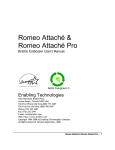
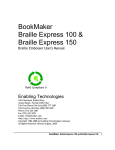
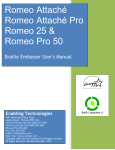
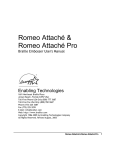
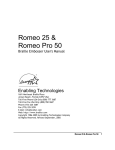
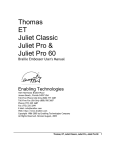
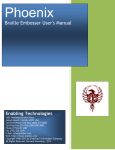
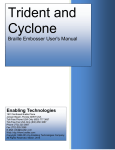
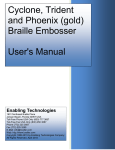

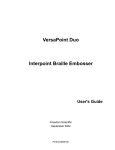

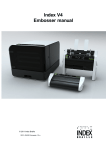
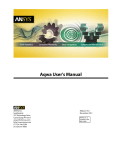
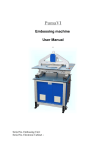
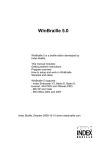
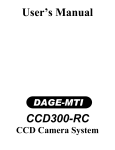
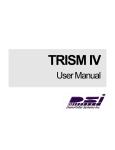
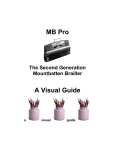


![Registry Manual []](http://vs1.manualzilla.com/store/data/005750489_1-c8586633e9f35db1a00a4874731a3151-150x150.png)